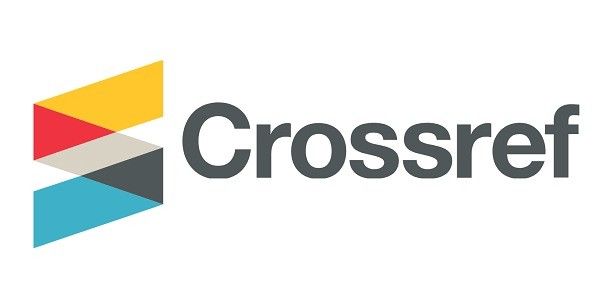Abstract
During the interwar period, numerous endeavours were made to develop a rational kitchen, also called a laboratory kitchen, namely one that prioritised labour-saving efficiency through thoughtful layout and design. Catherine Beecher's work is often credited as its starting point. By synthesising household reformers' experiences and architects’ design expertise, scholars have extensively examined how rational kitchens evolved. This paper discusses the conception of the standardised Dutch Bruynzeel Kitchen (1938) by the collaborative efforts of two designers with distinct yet complementary interior design profiles. Renowned Dutch designer Piet Zwart, widely recognised for his contributions, finalised the technical drawings and promotional materials for this iconic kitchen. Less acknowledged is the early involvement of Dutch architect Koen Limperg, son of a business economics professor, who drew the preliminary designs. Interestingly, this kitchen design was developed while body culture emerged in the Netherlands. Complementing already existing research from art history, anthropology, the history of technology, and gender studies, this paper, based on literature and archive research, investigates through an interior design lens how both designers integrated their respective practices and expertise into the Bruynzeel Kitchen's design, incorporating elements of physical activities (dance, gym, sports) and household economics.
Publication Date
7-30-2024
References
Beecher, C. E. (1841). A treatise on domestic economy: For the use of young ladies at home, and school. Marsch, Capen, Lyon and Webb.
Brentjens, Y. (2008). Piet Zwart 1885–1977: Vormingenieur. Uitgeverij Waanders.
de la Bruhèze, A. A. A. (2001). De crisis: Kapitaal-versus arbeidsintensieve techniek, 1929–1940 [The crisis: Capital versus labour-intensive engineering, 1929–1940]. In J. W. Schot (Ed.), Techniek in Nederland in de twintigste eeuw (pp. 63–83). Stichting Historie der Techniek. Walburg Pers. https://www.dbnl.org/tekst/lint011tech04_01/lint011tech04_01_0004.php
De Vos, E. (2010). Living with high-rise modernity: The modernist Kiel Housing Estate of Renaat Braem, a catalyst to a socialist modern way of life? Home Cultures, 7(2), 135–158. http://dx.doi.org/10.2752/175174210X12663437526098
Efficiency-dagen te Amsterdam [Efficiency days in Amsterdam]. (1930). Deli Courant.
Freeman, J. (2004). The making of the modern kitchen: A cultural history. Berg.
Henderson, S. R. (1996). A revolution in the woman's sphere: Grete Lihotzky and the Frankfurt Kitchen. In D. Coleman, E. Danze, & C. Henderson (Eds.), Architecture and feminism (pp. 221–253). Princeton Architectural Press.
Hin, J. (Director). (1941). De Zeearend [The Sea Eagle] [Film]. Multifilm. https://www.youtube.com/watch?v=ZFajWJXAcC4
Hofer, S. (2001). Die Ästhetisierung des Alltags. Architektur für die Reform des Lebens von Peter Behrens bis Paul Schultze-Naumburg [The aestheticisation of everyday life. Architecture for the reform of life from Peter Behrens to Paul Schultze-Naumburg]. In K. Buchholz, R. Latocha, H. Peckmann, & K. Wolbert (Eds.), Die Lebensreform: Entwürfe zur Neugestaltung von Leben und Kunst um 1900 (pp. 271–277). HäusserVerlag.
Houkes, J. (2020). LIMPERG jr., Théodore.BWSA online. http://hdl.handle.net/10622/d04bf360-94d4-47fc-82ef-b3c883bef995
Janzen, J. W. (1943). De keuken in den volkswoningbouw [The kitchen in social housing]. Tijdschrift voor Volkshuisvesting en Stedebouw, 24(11/12), 128–135. https://resolver.kb.nl/resolve?urn=MMHNI03:002845010:00001
Limperg, K., Meyers, G. J., & Lotgering-Hillebrand, R. (1935). Keukens [Kitchens]. Nijgh & Van Ditmar nv.
Roding, J. (1981). Koen Limperg's functionalisme: Bijdrage tot een plezieriger dagelijks leven [Koen Limperg's functionalism: Contribution to a more pleasant everyday life]. Wonen-TA/BK, 13(18), 9–30.
Ruegg, A. (1998). La contribution de De Koninck à l'habitation nouvelle [De Koninck's contribution to new housing]. In C. Mierop & A. Van Loo (Eds.), Louis Herman De Koninck: Architecte des années modernes: Architect of modern times (pp. 187–216). Archives d'architecture moderne.
van Blijenburgh, W. P. H. (1930). Kamergymnastiek voor iedereen [Domestic indoor gymnastics for everyone]. W. L. & J. Brusse nv.
Van Caudenberg, A., & Heynen, H. (2004). The rational kitchen in the interwar period in Belgium: Discourses and realities. Home Cultures: The Journal of Architecture, Design and Domestic Space, 1(1), 23–49. https://doi.org/10.2752/174063104778053581
v. d. S., M. (1930). De Holland-keuken [The Holland Kitchen]. Het R.K. Bouwblad. https://www.delpher.nl/nl/tijdschriften/view?coll=dts&identifier=dts:11013:mpeg21:0012
Zwart, P. (1937). De „Zeearend“ [The „Sea Eagle“]. Prisma der Kunsten,2(6), 167–176. NV Uitgeverij „De Torentrans.“
Submitted Date
2024-01-05
Accepted Date
2024-05-27
First Page
125
Last Page
150
Recommended Citation
Geerinkcx, S., & De Vos, E. (2024). Exploring the Dutch Bruynzeel Kitchen Through the Negotiations of Its Two Designers, Limperg and Zwart. Interiority, 7 (2), 125-150. https://doi.org/10.7454/in.v7i2.448
Creative Commons License

This work is licensed under a Creative Commons Attribution-NonCommercial 4.0 International License
Author(s) retain the copyright of articles published in this journal, with first publication rights granted to Interiority.






